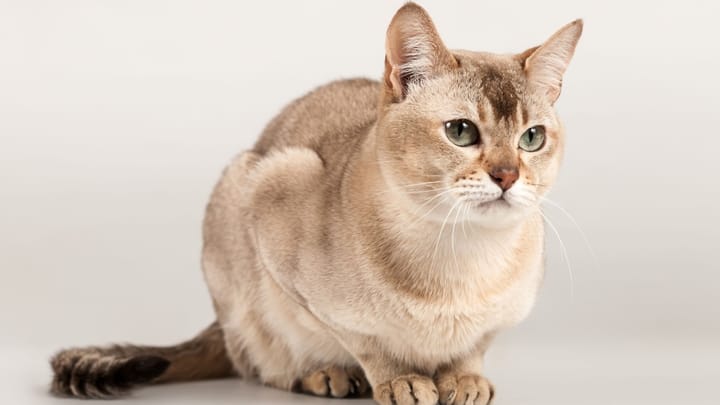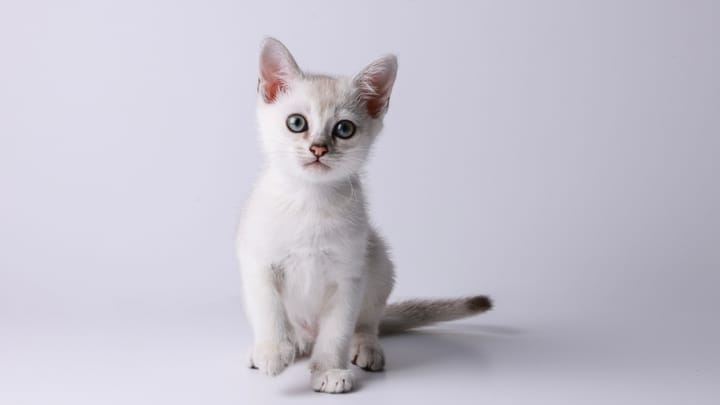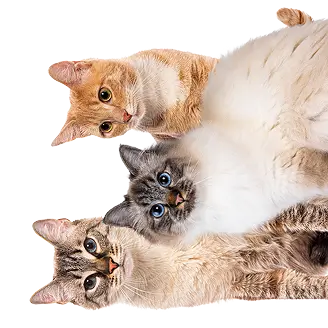Burmilla


Burmillas come from England and their name is linked to their origin, as a cross between a Burmese and a Persian Chinchilla. The first Burmilla was the result of accidental cross-breeding in 1981 between a lilac English Burmese and a silver Persian Chinchilla. The breed was then manipulated in order to develop a new breed of cat, which would cross the phenotype of the Burmese and the character of the Persian Chinchilla. The Burmilla is a member of the Asian group of cats, and has a good reputation for being easy to look after and maintain.
|
Life expectancy |
The Burmilla has a life expectancy of between 12 and 15 years |
|
Temperament |
|
|
Adult size |
Female
Between 8 and 12 in
Male
Between 9 and 14 in
|
|
Adult weight |
Female
Between 9 and 11 lb
Male
Between 9 and 13 lb
|
|
Coat colour
Silver / golden shades / black / blue / chocolate / cameo (red with silver tips) / lilac / tortoiseshell. All colours are possible except for white. Their coat is always tipped. Their undercoat is silver and their hair is tipped with a chocolate brown colour, which varies depending on their age (brighter in kittens and darker in adults). |
Black Brown Red Cream Blue |
|
Type of coat
Short |
Short |
|
Eye colour
Gold/yellow, green |
Green
Yellow
|
|
Purchase price |
The Burmilla costs between £500 and £650 |
There is a type of Burmilla with mid-length hair, called the "Longhaired Burmilla" by the US Federations, TICA and CFA, and "Tiffany tipped" by the European Federations.
More details about the Burmilla
Burmilla: Origins and history
In 1981, the accidental mating of "Fabergé", a female lilac Burmese, with "Sanquist", a silver Persian chinchilla, who both belonged to Baroness Miranda Von Kirchberg, gave birth to the first 4 Burmilla kittens. The Baroness then decided to have a litter by mating another of her Burmese cats with Sanquist. These first kittens are at the origin of many lineages of this new breed. Cross-breeds have been specifically made to get particular physical characteristics such as short hair, as well as improving the quality of the tipping on their fur!
Physical characteristics of the Burmilla
Burmillas are generally heavier than you’d expect, thanks to their muscular bodies and bone structures. Their chests are broad and powerful, and they have medium-sized, triangular heads. They have broad cheekbones, and a nose break, which forms a vertical line with their pronounced lower jaw. Their ears are medium-sized, angled forward and are slightly rounded at the tips. Their eyes are big and bright, and their tail tapers and ends with a rounded tip.
Burmilla: Characteristics
Burmilla: Behaviour
Breed compatibility Burmilla
Burmilla: Purchase price
Their price ranges from £500 to £650. Price varies depending on their gender, lineage (parental pedigree) and their conformity to the breed standard.
It costs on average £25 to £30/ month to provide for its needs, to provide it with a good quality diet and keep it in good health.
Burmilla: Shedding
None
Aside from their hair moulting with seasonal changes, Burmillas don’t lose their hair, meaning no special attention needs to be paid to their grooming.
Burmilla: Grooming
Fur maintenance is easy as their short hair does not require daily brushing. It is necessary, however, to keep and eye on the condition of their eyes and ears.
Burmilla: Health
Life expectancy of between 12 and 15 years.
Due to their light undercoats, Burmillas prefer warm weather to cold weather.
High activity levels must be maintained to avoid the cat becoming overweight.
Although they are generally healthy cats, Burmillas can still develop the same illnesses as all other cats. They can be prone to periodontal diseases (gingivitis and tartar) and therefore dental care is highly recommended.
Also, Burmillas are prone to polycystic kidney disease (PKD), which is an inherited disorder from the Persian side. It is therefore advisable to have genetically tested the cats during breeding.
The breed was recognised in Europe around 1990 by the International Feline Federation and the Governing Council of the Cat Fancy. In the United States, the breed was provisionally recognised in the 2000s. Cross breeding is permitted with the English Burmese, Asian and Persian breeds.








